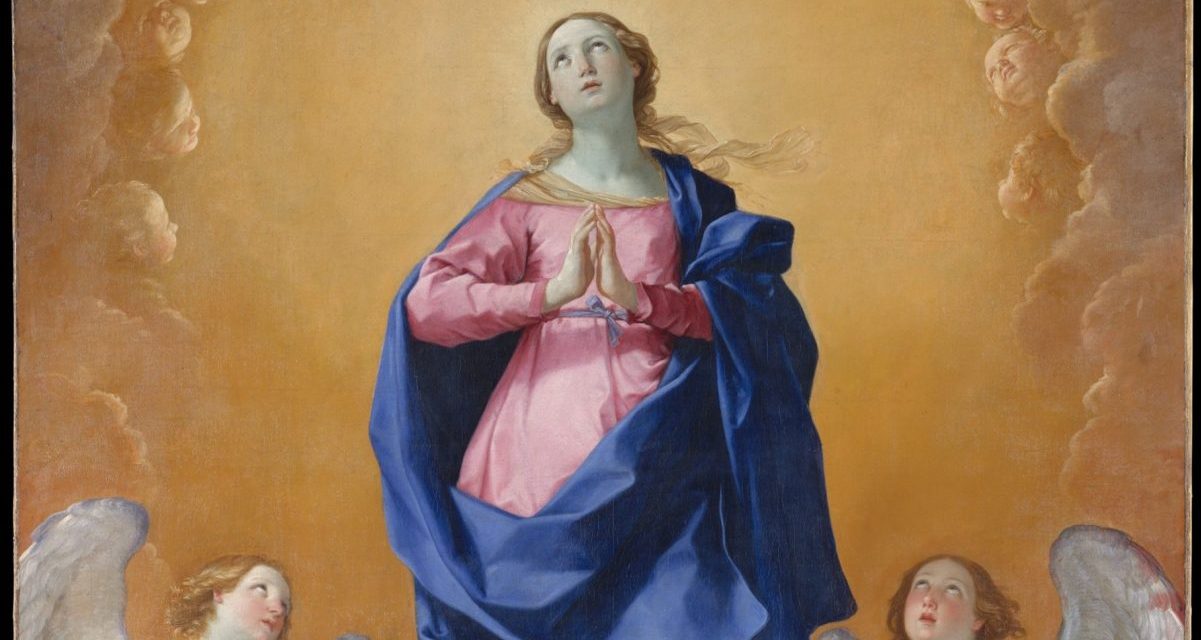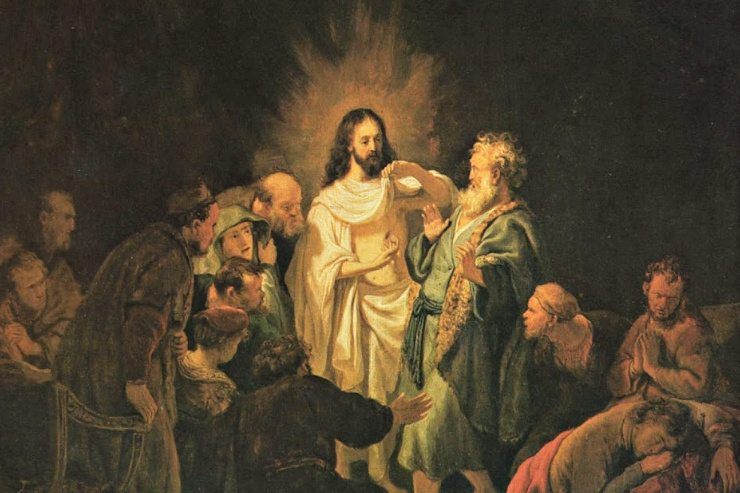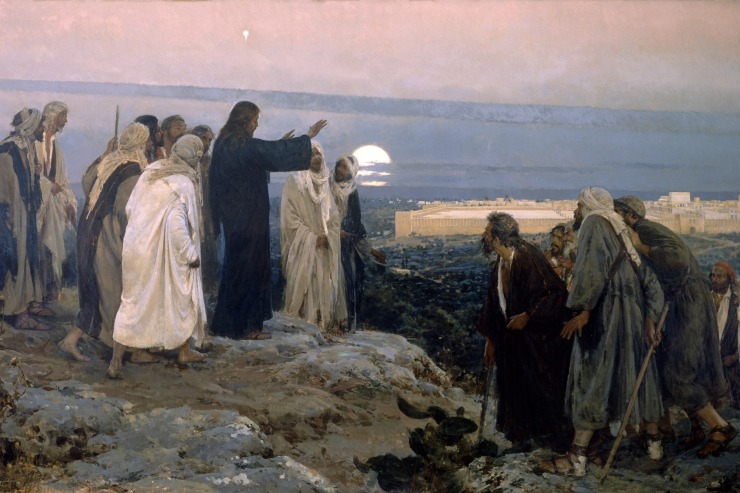But rather than bringing Mary down to our level to make her more relatable, let us instead remember who she is – The Immaculate Conception – so to be reminded that we too are called to live lives of perfect humanity.
I love Christmas music so much, it’s hard to force myself to wait to listen to it. I make myself wait until at least halfway through Advent, but after that you’ll find me listening to it into January. Of course, there are several Christmas songs that I could do without, and a few that make me want to turn the radio channel or switch to the next song as soon as they begin. But there are two in particular that are among my least-favorite not because of tune, style, or subject, but because of content.
One is “Mary, Did You Know?” My apologies if it’s your favorite Christmas song, but in light of today’s feast, I feel the need to explain why I think this song needs a second look – and why it shouldn’t be played at your local church this Christmas.
The song is filled with nice pious thoughts, of course. It could be a very beautiful meditation, entering into the thoughts of Mary, as she “kept all these things in her heart” (Lk 2:19). It’s important to put ourselves in Mary’s position during these days of Advent.
Part of me marvels that a song about the Blessed Mother has become so popular and beloved amongst non-Catholics. I’m a frequent guest speaker for parish RCIA programs, and I always like teaching the topic of Mary around Advent. It’s a time when non-Catholics seem to be perfectly fine with statues of Mary all around. Even if those statues are plastic and light up at night in someone’s front yard, I’ll take what I can get. Christmas is a time when we can talk about Mary, simply because we come face to face with Baby Jesus. And every baby has a mom.
Therefore, you might be thinking I should be grateful that groups like Pentatonix and people from CeeLo Green to Kenny Rodgers are singing about the Blessed Mother.
As I mentioned, my issue with the song extends beyond personal preference. It has a nice melody and can really be quite meditative. But the song doesn’t know who the Blessed Mother is.
Songwriter, did you know that your Savior’s mom is so much greater than you think?
The problem is not so much in the fact tht Mary did know who Jesus was (because the Angel told her). Because after all, there are many things Mary did not know about the way the events of the next 33 years would play out. She’s not omniscient.
Rather, the biggest problem is in the first verse. “Did you know that your baby boy has come to make you new? / This child that you’ve delivered, will soon deliver you.”
Not If or What but How
On today’s feast of the Immaculate Conception, let’s delve a little deeper into this. There are a few common misconceptions about this dogma, even among Catholics. (The first misconception is that the Immaculate Conception refers to the Virgin Birth.)
Mary did need to be delivered. Mary needed salvation. The fact that she was immaculately conceived in the womb of her mother Anne does not mean she did not need to be saved by the Cross of Christ. What is distinctive is not if she needed salvation (she did) or what she needed (salvation by Jesus Christ), but how she received it. She has been saved, but she was saved ahead of time. She has received the grace of the Cross ahead of time, so that she could bear the Son of God. (Note: The fact that the Crucifixion of Christ won’t happen for 40+ years doesn’t matter, because the Paschal Mystery enters eternity and is not bound by time. See CCC 1085.) The liturgy of today’s feast refers to this as a prevenient grace.
Jesus is Her Savior. The grace of salvation came from God, and God alone. It is the work of God, a free act from her Creator, and can be attributed to nothing she did. But her redemption was an act of preservation, whereas ours is an act of deliverance.
A former colleague of mine, a Dominican Sister, uses this image: Imagine we are traveling south down the interstate when a sinkhole opens up in the middle of the northbound lanes next to us. Slamming on our brakes, we get out of the car to save everyone. You run up to the sinkhole to try to save those who had fallen in. I try to stop traffic before more fall in. You are saving those who have already fallen in. I’m saving those who have yet to fall in. We are both saving people, but you are delivering, I am preserving.
Every one of us should cringe at those lines in “Mary, Did You Know?” because they are a denial of the Immaculate Conception. You see, this baby boy has saved Mary. But he will not soon deliver her. She’s already been saved because she’s been preserved. He has come to make all of us new, but she stands as our model of holiness. She does not need to be made new, because she stands as our Mother Eve stood at creation, sinless and yet perfectly free to choose. She cooperated in his mission to make all things new when she began to reverse the sin of Eve’s disobedience with her perfect obedience.
It Is Who She Is
Why is this important? Because Mary’s Immaculate Conception is not just something about Mary; it is who she is. When the angel Gabriel came to her in her home in Nazareth, he addressed her not as Mary but as “kecharitōmenē,” or “full of grace,” as if this was her name. At Lourdes, she revealed herself to St. Bernadette with the words, “I am the Immaculate Conception.”
Mary is part of the union of love between the Father, Son, and Holy Spirit in a way we can’t even imagine. At the Annunciation, the hypostatic union happens inside her very being; the Word becomes flesh. The Son of God takes her DNA as his, takes in oxygen that was once hers, grows and develops because of her.
I’m sure there are beautiful intentions behind the writing of the song, and I am grateful we are taking the time to ponder the mystery of the Incarnation. But rather than bringing Mary down to our level to make her more relatable, let us instead remember who she is – The Immaculate Conception – so to be reminded that we too are called to live lives of perfect humanity. We were not created for sin, but for communion. We do not need to bring her down, we need to ask her to bring us up!
Mother Mary Francis reminded her sisters, “It could be that this great solemnity which is meant to bring us so close to our Mother could really separate us from her if we did not enter profoundly into its meaning.”
We may be very far from immaculate. But let us enter into this feast and into this Advent with her. She was fully human, and knows what it is like to be faced with choices, dilemmas, and crosses. May we ask for her help as we struggle to follow her Son- only she can show us what that looks like in a perfect way. This Advent season, may we watch and wait with her. May we keep all things in our hearts. May we receive the Child Jesus with souls purified for his arrival.














